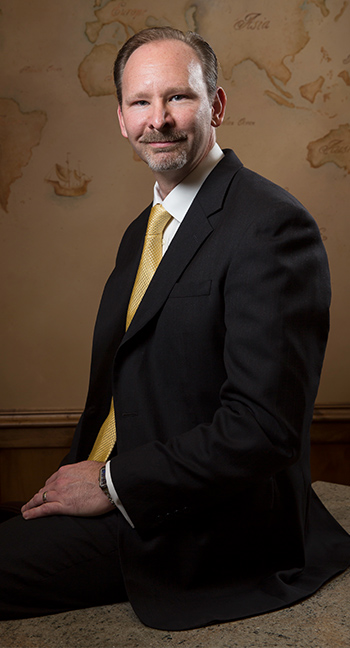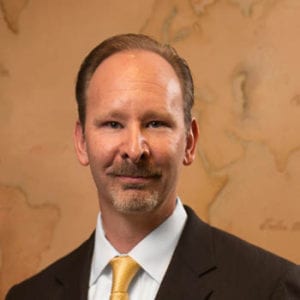Quick to listen, slow to speak
Quick to listen, slow to speak

Chris Gurnee • Ogden, UT
Cornerstone Financial and Associates Inc. • Foresters Equity Services Inc.
Read full biography below
Helping clients navigate through market volatility.
My role is to continually build relationships, manage risk, and set clear client expectations. All require me to be “quick to listen and slow to speak.” One of the best ways to accomplish these goals is by meeting with clients on a systematic basis.
I put myself in my clients’ shoes and ask, “What would I expect from someone helping to manage my investments, goals, and expectations?” I would want communication on a regular basis to seek clarity amid all of the financial noise out there and to hear about the plan for the path ahead.

When it comes to managing risk and putting my clients’ best interest first, active money management is paramount. I have a commitment to help my clients navigate through market volatility.
I have not had many potential clients say, “Chris, I saved too much money for retirement,” but I have had a number of potential clients say, “I do not want to experience another 2008 market correction—especially without some type of preparation or protection from steep losses.”
Active third-party money managers provide a team of experts who are dedicated to keeping the financial noise at a minimum and seeking suitable opportunities for my clients to keep them on target in terms of their overall investment plan. This is a team effort, so to speak, and requires multiple strategy elements, including a role for active investment management.
I explain this concept to a potential client by summarizing one simple aspect of risk-adjusted returns: Our objective is to take on less risk than a traditional market index but to attain fairly comparable returns over time. This disciplined approach puts our team in a great place to move toward the client’s investment goals. While there are never any guarantees on this, and the suitability of strategies has to be strongly considered, historically we know this can be achieved for most clients. So, simply put: Take less risk while finding returns that can meet our investment plan objectives.
I am relatively new to it, just since 2014. After the lessons learned during the dot-com crash, and then the 2008 credit crisis, I knew there had to be better answers than traditional asset allocation. I knew intellectually and emotionally that there had to be alternatives, but it took me some time to find the right solutions.
You can put together sound investment plans and allocations that fit with all of the principles of modern portfolio theory, and be on pretty legitimate ground doing so. But to me, it was increasingly becoming obvious that that was not the optimal solution for client investment needs, especially those planning for retirement.
This was a definite need for my clientele—and I felt I was not truly serving the best interests of my clients if I did not at least offer the option of active investment management. I have been extremely busy since making that decision and finding a strong third-party active manager as a partner. I have placed a substantial portion of client money toward the active platform since making that change within my practice.
 Very positively. It does take a substantial amount of education. So many people have been told their entire lives that investing is all about setting and rebalancing asset allocations—essentially to buy and hold and everything will work out fine in the end.
Very positively. It does take a substantial amount of education. So many people have been told their entire lives that investing is all about setting and rebalancing asset allocations—essentially to buy and hold and everything will work out fine in the end.
But it has become increasingly clear, as we saw during the 2008-2009 period, that people just do not have the stomach for that type of market volatility. They will make bad decisions under stress. They may have said prior to that period that they wanted the types of returns that the market can produce in big up years, yet did not fully understand the level of risk associated with those returns.
The reality is that there are bear markets. We know there will be other major downturns, we just do not know when. We need to prepare for those. How can we best do that? Is it through asset allocation? That can be very helpful, undoubtedly. However, taking it a step further, we can add an active management component to a portfolio to help manage risk better. That may not be the key for everyone, but it plays a big role for a lot of clients.
I can show clients the returns of the market for periods such as 2001-2003 and for 2008, and look at the results of several active strategies. For the most part, they were able to minimize losses or, in some cases, even show a positive return. We then look at the results of a typical well-allocated mutual fund portfolio. There was really no place for most investors to hide.
When you combine that type of analysis with the difficulty of making up for losses in down years, and then compare it to the compounding of smoother, less-volatile returns, the active approach has a lot of appeal for most clients. Average investors, myself included, are concerned about volatility returning, and we are looking for ways to help mitigate and reduce that risk.
I have built a focus for my practice around serving the needs of clients in transition. These can be upsetting situations such as a layoff or death of a spouse, or much happier circumstances such as new employment, marriage, the arrival of children, or moving fully into retirement.
The commonality for all of these clients is their desire to move forward with their financial lives in a well-planned, structured, and disciplined fashion. This is where I think I can add great value. Active investment management is becoming an increasingly important tool that I can use on behalf of my clients as they plan for the major changes in their lifestyles.
 Christopher Gurnee has been a financial-services professional for nearly 15 years and is the president of Cornerstone Financial and Associates Inc., based in Ogden, Utah. He is a registered representative of and offers securities through Foresters Equity Services Inc.
Christopher Gurnee has been a financial-services professional for nearly 15 years and is the president of Cornerstone Financial and Associates Inc., based in Ogden, Utah. He is a registered representative of and offers securities through Foresters Equity Services Inc.
Mr. Gurnee says, “My background includes 20 years of experience as a successful and self-motivated small-business owner. My career in financial services started just prior to the dot-com crash and 9/11. It was baptism by fire in managing client expectations and risk in the first years of my career. I credit these early experiences to forging an understanding of the importance of managing risk and developing shared expectations with clients.”
After spending his early years abroad growing up in a military family, Mr. Gurnee has been a resident of Utah for many years. He and his family enjoy a variety of outdoor activities, including hiking, biking, and camping. Mr. Gurnee, his wife Rebecca and two children also love to travel, with warm weather scuba sites a favorite destination. He says, “While there is never a shortage of family activities in these great Utah outdoors, a tropical vacation is a welcomed brief escape from the tough winters.”
Mr. Gurnee is active in several charitable and faith-based activities, including Compassion International, a Christian organization dedicated to the long-term development of children around the world.
Disclosure: Christopher Gurnee is an investment advisor representative offering securities and advisory services through Foresters Equity Services Inc., member FINRA, SIPC, and a registered investment advisor. Cornerstone Financial & Associates Inc. is independent of Foresters Equity Services Inc.
Photography by August Miller

